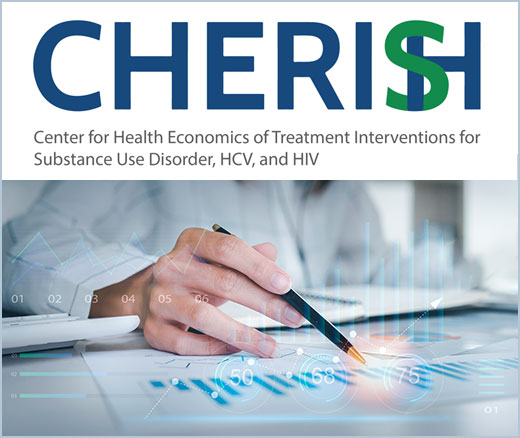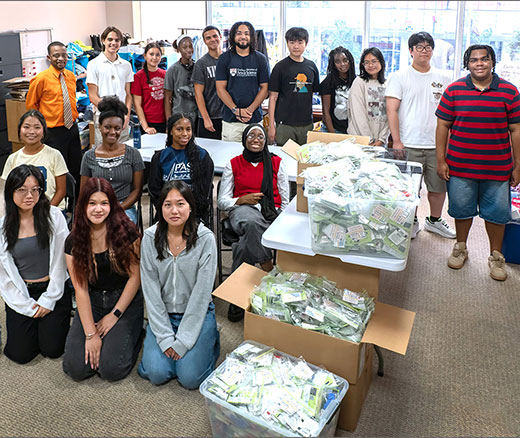
New Model Predicts Stimulant Overdose Risk Among Medicaid Patients
LDI Fellows Used Medicaid Data to Identify Individuals at Highest Risk for Cocaine- and Methamphetamine-Related Overdoses, Paving the Way for Targeted Prevention
Substance Use Disorder
Blog Post

“We need some radical ideas to stop people from dying.”
This is what one community member had to say when asked about using vending machines to deliver lifesaving items like fentanyl test strips and overdose-reversal drugs.
Vending machines represent a potential solution to the rising death toll from opioids. In Philadelphia, overdoses have reached an all-time high, affecting Black people disproportionately, and novel ideas are needed since the drug supply is often contaminated by new and dangerous drugs.
In a new study, LDI Fellows Rebecca Stewart, Rachel French, David Mandell, and their team studied the public reaction in Philadelphia to implementing vending machines for harm reduction (VMHR), as the practice is officially called. In one of the first investigations of public opinion on this strategy, the authors interviewed 31 potential end users, health center staff, and community members.
All three groups endorsed vending machines for wound care, fentanyl test strips, the overdose-reversing drug naloxone, and materials linking people to care. While health center staff endorsed machines for syringes and medications, those uses were more controversial for potential end users, though they became more supportive as conversations proceeded.
Those interviewed also suggested several strategies for improving acceptance of VMHR, including education, one-on-one conversations with community members, and coupling the machine with safe disposal of syringes and information linking people to care.
“With thoughtful planning and design, VMHR could be a feasible and acceptable modality to reduce death and disease transmission … in cities like Philadelphia,” the researchers concluded.
To learn more, we spoke with Dr. Stewart about the study and its implications.
VMHR evolved out of syringe vending machines, which have been used in Europe and Australia for over 20 years. Some syringe vending machines dispense clean needles for free and others have an exchange function, where a user can dispose of a used needle and receive a clean one. VMHR now include a broader range of harm reduction materials such as Narcan® (naloxone), safe injection kits, first aid materials, sexual health items like condoms and pills to prevent HIV (pre-exposure prophylaxis, or PrEP), medications for opioid use disorder, and even medical-quality opiates. So far, it appears that vending machines aren’t charging for items and are placed within certain health centers, where staff monitor and maintain them. As of yet, there are no reports of them being vandalized.
Populations who are high-risk for overdose and HIV are harder to reach via traditional health institutions. Vending machines are important because they provide access to harm reduction supplies to these populations and also provide security, reduce stigma, and promote population health. Also, because some people aren’t ready or able to interact with providers or engage with treatment, we need a system in place where people can access supplies without stigma. VMHR might attract individuals who otherwise would never engage in treatment, so removing that privacy might do more harm than good. Barriers to access should be lowered as much as possible.
| For more about the opioid epidemic, see LDI’s Issue Brief: Lowering the Barriers to Medications for Opioid use Disorder, Blog Post: The Origins of the Opioid Epidemic, and Seminar Recap: National Opioid Settlements. |
Internationally, a lot of the evidence is related to syringe vending machines. They have been documented to be effective at distributing clean needles and getting used needles out of circulation. A few survey studies from other countries found that VMHR had a positive impact on the lives of people who used them. So far, we’ve learned that people do use the machines. The VMHR in Las Vegas have hundreds of patient interactions per month. We’ve also learned that they can come in all shapes and sizes. In Philadelphia, we have the NarcanNearMe tower at the Lucien E. Blackwell West Philadelphia Regional Library at 125 S. 52nd Street in West Philly. It looks like a locker that opens with a code. That vending machine only contains Narcan® whereas other machines, notably the one in Cincinnati, have a variety of harm reduction items.
We need to test messaging and other strategies and learn how to make VMHR more acceptable to different stakeholder groups. We found that stakeholders agreed VMHR should have some messaging about treatment, which might aid in lessening stigma.
For health care workers, we need to prepare them to answer questions and combat misconceptions about VMHR and harm reduction. For the community, many communicated that we should beware of “not-in-my-neighborhood” attitudes and be open to having one-on-one conversations with community members. For end users, many expressed doubts about VMHR because they thought it would enable drug use, but the more we discussed VMHR, the more receptive these individuals became, showing the importance of communicating with this group.
Populations who are high-risk for overdose and HIV are harder to reach via traditional health institutions. Vending machines are important because they provide access to harm reduction supplies to these populations and also provide security, reduce stigma, and promote population health. Also, because some people aren’t ready or able to interact with providers or engage with treatment, we need a system in place where people can access supplies without stigma. VMHR might attract individuals who otherwise would never engage in treatment, so removing that privacy might do more harm than good. Barriers to access should be lowered as much as possible.
| To learn more about Vending Machines for Harm Reduction, see the latest from Las Vegas, Tacoma, Cincinnati, Philadelphia, and New York. |
The study, “‘There’s Absolutely No Downside to This, I mean, Except Community Opposition:’ A Qualitative Study of the Acceptability of Vending Machines for Harm Reduction,” was published on February 28, 2023 in the Harm Reduction Journal. Authors include Rebecca E. Stewart, Nicholas C. Cardamone, Emily Loscalzo, Rachel French, Collin Lovelace, Winna Koe Mowenn, Ali Tarhini, Linden Lalley-Chareczko, Kathleen A. Brady, and David S. Mandell.



LDI Fellows Used Medicaid Data to Identify Individuals at Highest Risk for Cocaine- and Methamphetamine-Related Overdoses, Paving the Way for Targeted Prevention

Penn and Four Other Partners Focus on the Health Economics of Substance Use Disorder

Penn Medicine’s New Summer Intern Program Immersed Teens in Street Outreach Techniques

LDI Experts Offer 10 Solutions to Get More Help to Seniors With Addiction

More Flexible Methadone Take-Home Policy Improved Patient Autonomy
Research Brief: LDI Fellow Recommends Ways to Increase Availability